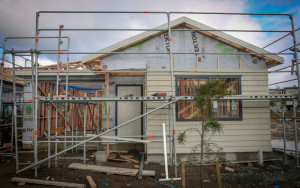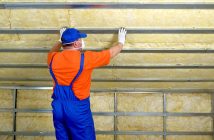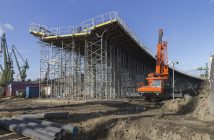Concrete is usually the foundation of a good building and efficient management of the effects of concrete corrosion can extend the life of a building.
However, concrete is not the only part of a structure that is threatened by corrosion.
On any building, both the cladding and the fasteners holding it in place are exposed to varying degrees of corrosion.
Less obvious parts that corrode are the polymers used as sealants and the protective coatings applied to other materials.
Corrosion continues to impose a massive cost on industry. This has been estimated, in a recent report issued by NACE (USA) to be more than three per cent—or multiple billions of dollars—of global GDP each year.
One cost that may not be obvious is unbudgeted capital expenditure to replace damaged frames, walls and façades resulting from the “leaky building syndrome.”
A “leaky building” is one that, as a result of defective design, materials, or construction—usually a combination of all three—allows water to enter through the external building envelope which then causes decay and damage to the internal structure of the building.
The situation arose from a combination of factors in the late 1990s and early 2000s that saw the construction of a large number of buildings using substandard materials, together with design flaws and insufficient maintenance that were vulnerable to moisture ingress.
“Leaky building syndrome has become a serious problem in New Zealand,” says corrosion expert, Les Boulton, Principal Consultant of Les Boulton and Associates in Auckland.
“It is becoming a global issue for many governments as there have now been court cases in New Zealand, Australia and Canada where developers and manufacturers are being sued.”
There have been many contributing factors to the problem of leaky buildings, including poor quality metal flashings which allow water to get behind the façade of a building and corrode materials such as the building framework and cladding fastenings.
In some cases, bare steel has been used for internal structural elements and left exposed to harsh coastal climates.
It is not only reinforced concrete in a building or structure that is impacted by corrosion. A broad definition of corrosion is ‘the degradation of a material through interaction with its environment’ which means that any part of a building is prone to some type of corrosion over time and at varying rates.
The Australasian Corrosion Association (ACA) works with industry and academia to provide an extensive knowledge base of research that supports best practice in corrosion management for situations such as ‘leaky buildings’.
This collaboration helps ensure all impacts of corrosion are responsibly managed, the environment protected, public safety enhanced and economies improved.
Polymers are used extensively in the construction industry, including as seals around windows and doors; guttering and downpipes, and corrugated polycarbonate panelling.
These are all affected by sunlight (UV radiation), moisture and heat. In addition to structural use, polymers are also often used as sealants over other materials, including concrete.
UV radiation interacts with a polymer at the molecular level where the UV has the right energy to modify chemical bonds.
The majority of testing of polymers and other construction materials has been carried out in European countries and the climatic conditions of the Northern hemisphere.
Research by organisations and government bodies has shown that at equivalent latitudes, New Zealand and Australia experience larger amounts and more intense UV radiation.
Even if stored in a dark cupboard, polymers still interact with their environment. When used as an additive to materials such as concrete, thermal and wet/dry cycles can leach out chemical binding agents.
According to Boulton, “leaky buildings” are not unique to New Zealand, but the geography and climate of particular sections of that country seem to exacerbate the problem.
In the past 10 years, corrosion on fixings of aluminium composite panels (ACPs) had caused a range of failures in commercial buildings clad using this material, resulting in panels becoming loose and allowing water to enter the building envelope.
“However, because it is not seen, building owners have been slow to recognise the problem,” Boulton adds.
“Asset owners need to be proactive about checking their buildings and cladding to ensure there is no water ingress.”
Inspection reports have shown that ‘’leaky buildings’’ have been built with monolithic cladding systems, which provided little or no margin for error if moisture ever did penetrate behind the cladding and into the building envelope.
Usually, the untreated, kiln-dried framing timber which had been approved by the now defunct Building Industry Authority for use in construction was particularly susceptible to any moisture ingress.
By the time an asset owner realised that there was a problem it was already too late to fix it without rebuilding significant parts of the structure of the building.
Another contributing factor was that for many years, developers had no incentive to pay for the best design of their buildings, nor the appropriate level of supervision of construction to ensure the buildings were constructed properly.
The NZ Building Code (NZBC) Clause B2, Durability, requires that all building components are fit for purpose and provide a service life as stated in the NZBC.
Durability appraisals of building products are required before a new product is deemed to be fit for installation in a new building.
This requires an independent assessment of the building product, system design, material corrosion resistance, and installation practices.
It is also important that the testing also reflects the geographic environment of where the building materials will be used.
“Thorough appraisals give the construction industry and asset owners confidence that the new products have been subjected to a robust technical examination by experts before the product is released into the market,” Boulton advises.
“Some failures in the ongoing leaky building crisis have been caused by water ingress behind inadequately designed or installed cladding systems which resulted in corrosion of hidden metal fixings.”
When plastics eventually become brittle due to UV exposure, they no longer afford the protection for which they were designed.
There have been instances of objects falling through polycarbonate canopies and injuring people below.
While the most visible degradation effect on polymers is an aesthetic one where a grey-white powdery substance forms on the surface, there are many other less obvious effects such as PVC guttering and downpipes developing cracks and leaks that could allow water to get inside the building envelope.
Owners of high-value assets must understand the cost implications of ignoring the effects of corrosion.
There are many advantages of planning for corrosion control and mitigation, two of which are that the life of an asset can be extended and maintenance time and costs can be reduced.
Monitoring the impact of corrosion on any type of structure is a critical aspect of ensuring asset integrity. A key way of minimising corrosion is to employ appropriate corrosion protection technologies.
Proactively testing and inspecting building structures gives a clearer understanding of where to spend limited resources on the maintenance of assets.
In order to effectively and comprehensively explain the benefits of incorporating maintenance planning into the design process, companies and practitioners in the industry should ensure they understand all the latest building products, construction technologies, processes and legislation.




